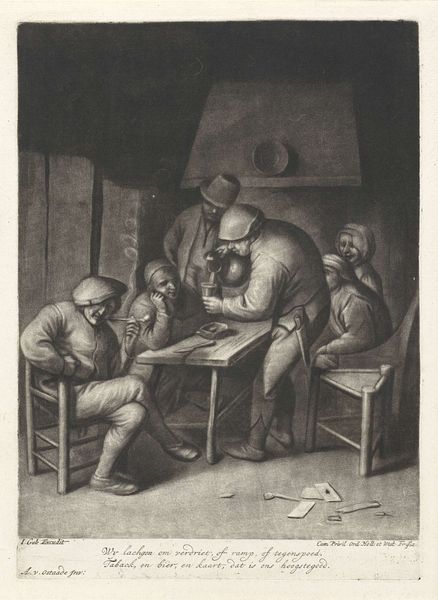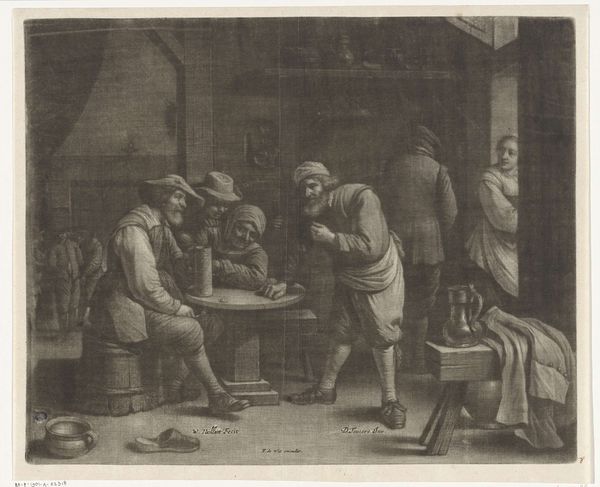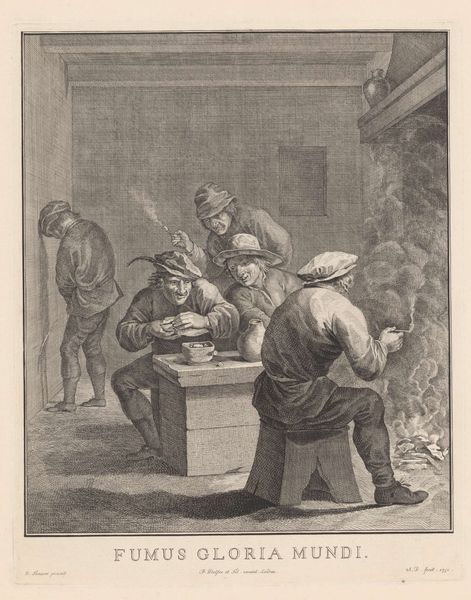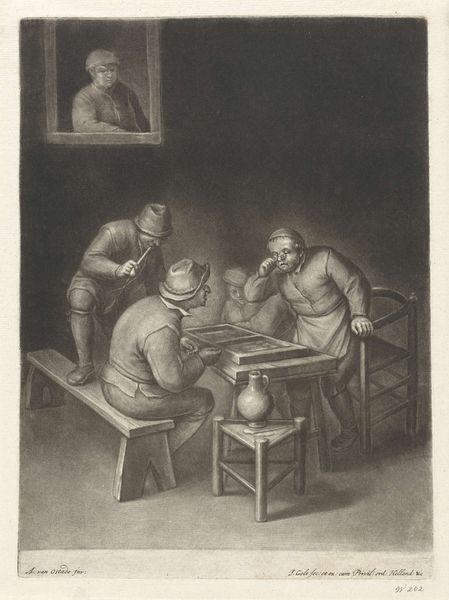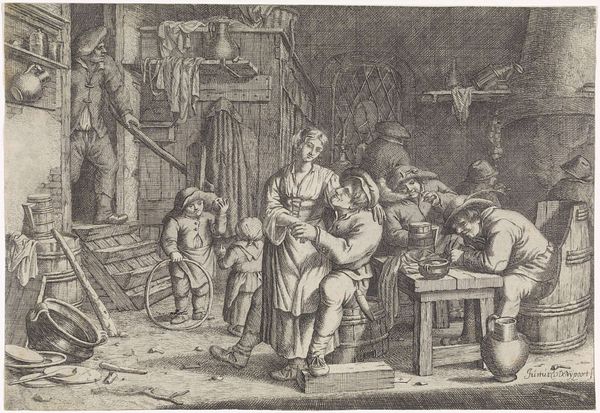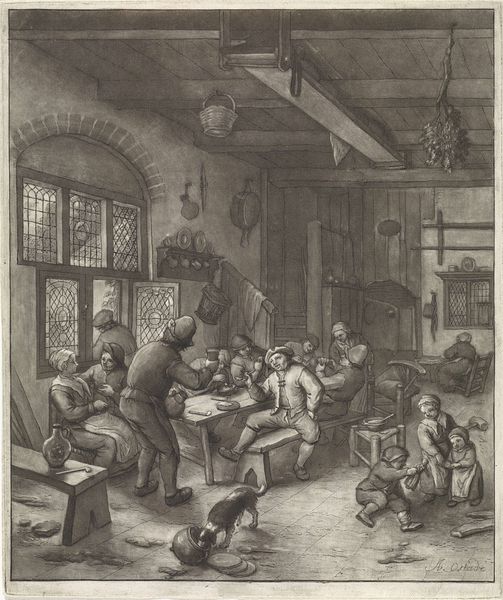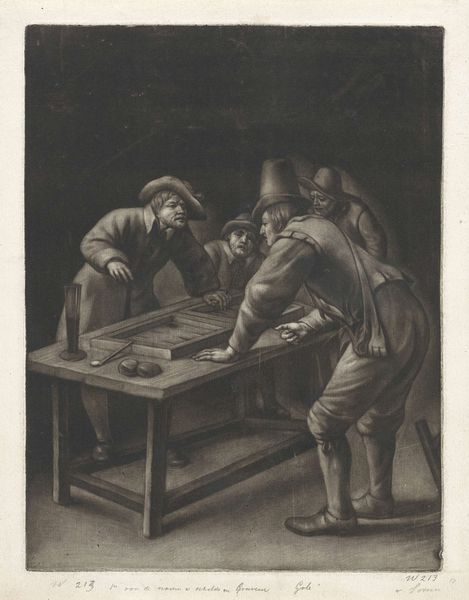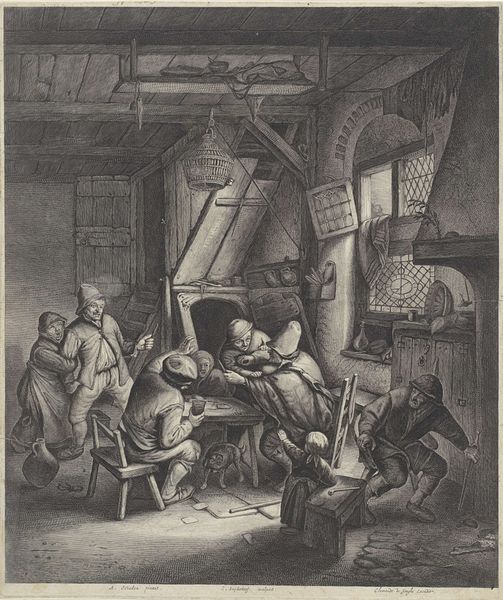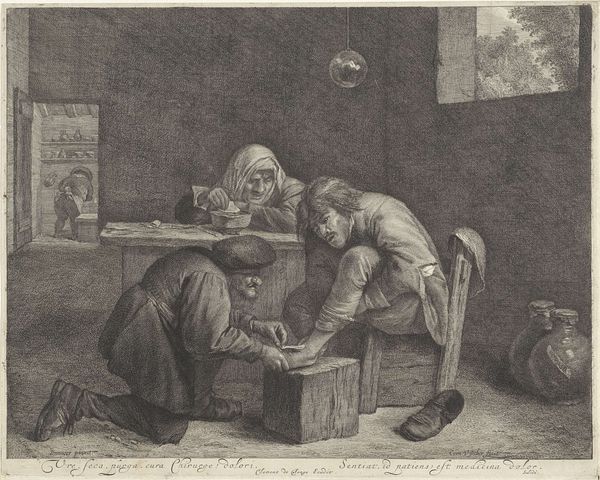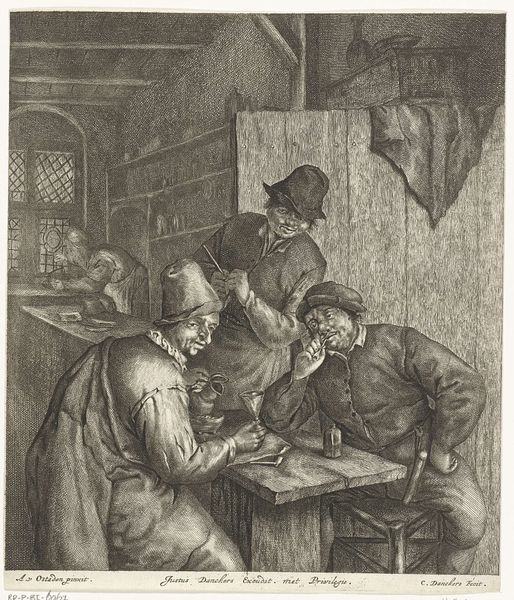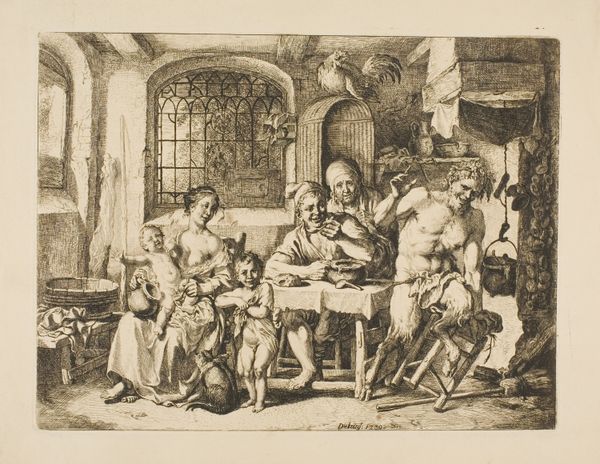
print, engraving
#
dutch-golden-age
# print
#
old engraving style
#
figuration
#
line
#
genre-painting
#
engraving
Dimensions: height 247 mm, width 198 mm
Copyright: Rijks Museum: Open Domain
Curator: So, here we have Jacob Gole's "Herberginterieur," an engraving likely created between 1670 and 1724. It's part of the Rijksmuseum's collection. What are your first thoughts? Editor: Dimly lit, isn't it? A tight-knit group huddling, but what's truly striking is how many hats there are! Every single figure seems to wear one. Is that a coded social thing, I wonder? Curator: Most definitely. Genre scenes such as these depicting everyday life, like tavern interiors, gained significant popularity during the Dutch Golden Age. Think of it as a mirror reflecting society back at itself. Artists captured ordinary people and environments, influencing Dutch identity in interesting ways. Editor: Yes, but notice that these hats also give these otherwise indistinct men individual definition within the smoky gloom of the common interior. They’re literally capped and contained by societal expectations, even in a space of presumed revelry, wouldn’t you agree? The hats set boundaries even as the men let their guard down in camaraderie. Curator: Absolutely. Gole's work, in particular, underscores the rise of the middle class and its culture through images of ordinary activities. This focus trickled all the way up into politics—asserting that value rested on the here and now instead of solely on ancestry or social class. The "everyman" held power! Editor: Look closer—beyond mere record-keeping, do you note how the ale pitcher almost forms a visual triangle with the board game the two seated figures are deeply immersed in? Could the scene capture the transient nature of enjoyment? The board game suggests strategy and calculated action versus the uncontrolled indulgence the drinks promote... Curator: Indeed. And consider how prints allowed for broader distribution, enabling wider societal commentary and influencing fashion, morality, and even political discourse during the period. Printmaking created and dispersed an accessible visual language. Editor: Which echoes into modern concerns about access and equity… It does appear there’s much more than simply boozing here, don’t you think? The details—the hats, the postures, the games, all become powerful symbols about 17th-century Dutch culture. Curator: Agreed. It’s really compelling to consider "Herberginterieur" as both documentation of, and active contributor to, its time. Editor: Ultimately, for me, Gole captured a potent moment frozen for us, where ordinary objects tell an intricate story.
Comments
No comments
Be the first to comment and join the conversation on the ultimate creative platform.

